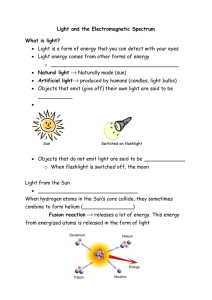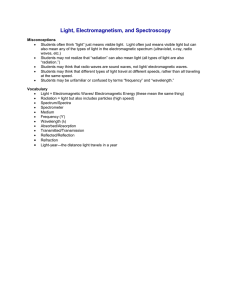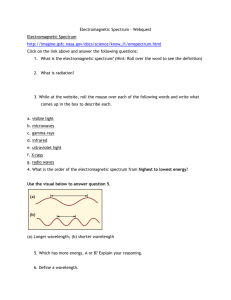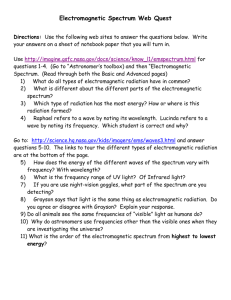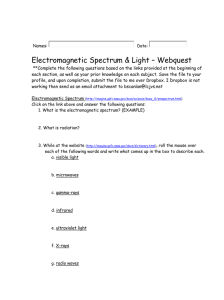what is rf? it`s like magic
advertisement
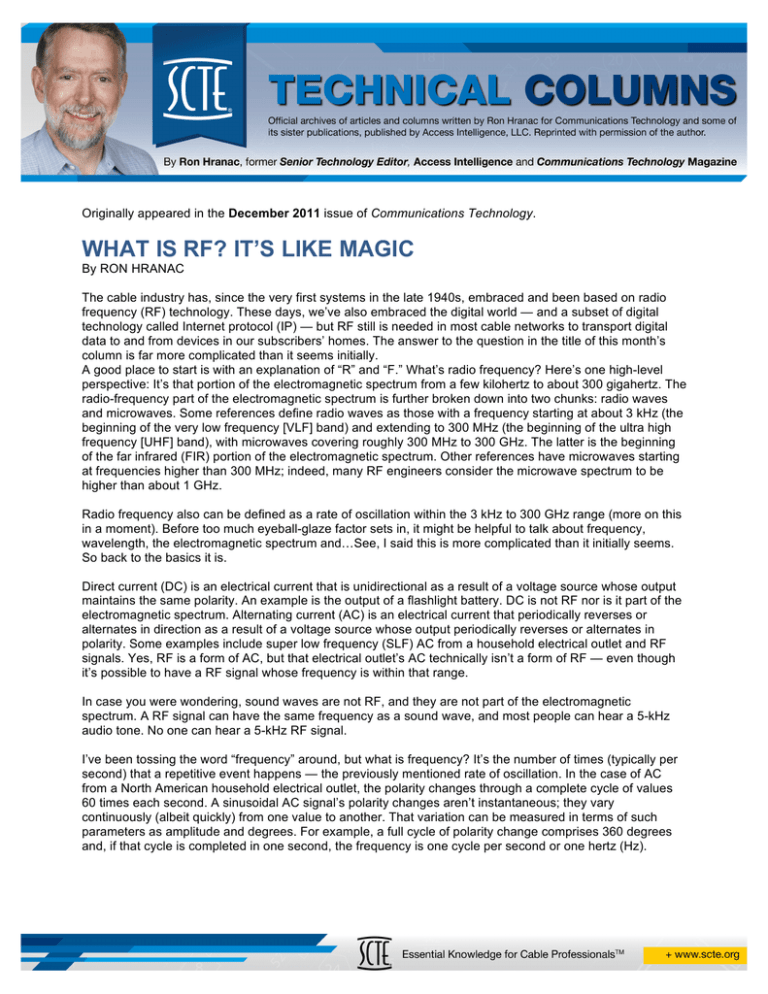
Originally appeared in the December 2011 issue of Communications Technology. WHAT IS RF? IT’S LIKE MAGIC By RON HRANAC The cable industry has, since the very first systems in the late 1940s, embraced and been based on radio frequency (RF) technology. These days, we’ve also embraced the digital world — and a subset of digital technology called Internet protocol (IP) — but RF still is needed in most cable networks to transport digital data to and from devices in our subscribers’ homes. The answer to the question in the title of this month’s column is far more complicated than it seems initially. A good place to start is with an explanation of “R” and “F.” What’s radio frequency? Here’s one high-level perspective: It’s that portion of the electromagnetic spectrum from a few kilohertz to about 300 gigahertz. The radio-frequency part of the electromagnetic spectrum is further broken down into two chunks: radio waves and microwaves. Some references define radio waves as those with a frequency starting at about 3 kHz (the beginning of the very low frequency [VLF] band) and extending to 300 MHz (the beginning of the ultra high frequency [UHF] band), with microwaves covering roughly 300 MHz to 300 GHz. The latter is the beginning of the far infrared (FIR) portion of the electromagnetic spectrum. Other references have microwaves starting at frequencies higher than 300 MHz; indeed, many RF engineers consider the microwave spectrum to be higher than about 1 GHz. Radio frequency also can be defined as a rate of oscillation within the 3 kHz to 300 GHz range (more on this in a moment). Before too much eyeball-glaze factor sets in, it might be helpful to talk about frequency, wavelength, the electromagnetic spectrum and…See, I said this is more complicated than it initially seems. So back to the basics it is. Direct current (DC) is an electrical current that is unidirectional as a result of a voltage source whose output maintains the same polarity. An example is the output of a flashlight battery. DC is not RF nor is it part of the electromagnetic spectrum. Alternating current (AC) is an electrical current that periodically reverses or alternates in direction as a result of a voltage source whose output periodically reverses or alternates in polarity. Some examples include super low frequency (SLF) AC from a household electrical outlet and RF signals. Yes, RF is a form of AC, but that electrical outlet’s AC technically isn’t a form of RF — even though it’s possible to have a RF signal whose frequency is within that range. In case you were wondering, sound waves are not RF, and they are not part of the electromagnetic spectrum. A RF signal can have the same frequency as a sound wave, and most people can hear a 5-kHz audio tone. No one can hear a 5-kHz RF signal. I’ve been tossing the word “frequency” around, but what is frequency? It’s the number of times (typically per second) that a repetitive event happens — the previously mentioned rate of oscillation. In the case of AC from a North American household electrical outlet, the polarity changes through a complete cycle of values 60 times each second. A sinusoidal AC signal’s polarity changes aren’t instantaneous; they vary continuously (albeit quickly) from one value to another. That variation can be measured in terms of such parameters as amplitude and degrees. For example, a full cycle of polarity change comprises 360 degrees and, if that cycle is completed in one second, the frequency is one cycle per second or one hertz (Hz). As noted previously, AC from a household electrical outlet has a frequency of 60 cycles per second or 60 hertz. A local FM radio station’s transmitted signal might have a frequency of 103,500,000 hertz or 103.5 megahertz. If one plots a sinusoidal AC waveform on a graph of amplitude in the vertical axis versus time in the horizontal axis, the result is the classic sine wave. One way to characterize a sinusoidal AC waveform is by its wavelength, which is a measure of the distance between the same points on adjacent cycles — for instance, from one cycle’s peak to an adjacent cycle’s peak. Another definition of wavelength is the distance a wave travels through some medium in the period (1/frequency in hertz) of a single cycle. Wavelength and frequency are related by the formula υ = f/λ, where υ is the speed of the wave (speed of light in a vacuum or somewhat slower in a medium such as coaxial cable), f is frequency, and λ is wavelength. The following variations of the formula are used to calculate the relationship between frequency in hertz (fHz) and wavelength in meters (λmeters) or feet (λfeet) in a vacuum: 299,792,458 meters per second = fHz/λmeters or 983,571,056.43 feet per second = fHz/λfeet. NASA defines the electromagnetic spectrum as “the full range of frequencies, from radio waves to gamma rays…,” and Wikipedia says it’s the “range of all possible frequencies of electromagnetic radiation.” Electromagnetic radiation is a form of energy comprising oscillating electric and magnetic fields (the electric and magnetic components are orthogonal or perpendicular to each other, and they also are orthogonal to the direction of propagation), and exhibiting wave-like behavior as it zips along through space. The wave-like behavior allows electromagnetic radiation to be categorized based on wavelength. Going from electromagnetic radiation’s longest wavelengths and lowest frequencies to the shortest wavelengths and highest frequencies, the list looks like this: radio waves, microwaves, infrared, visible light, ultraviolet, X-rays and gamma rays. Unlike the visible-light portion of the electromagnetic spectrum, RF can’t be seen. Its presence and various characteristics like frequency, wavelength and amplitude can be detected and measured with specialized test equipment. Examples of that test equipment include signal-level meters and spectrum analyzers. RF energy propagates through free space at the speed of light, and it is made of photons. “Wait a minute,” you say. “I thought photons are what light is made of.” That’s true, because light’s a form of electromagnetic radiation. But so are radio waves, microwaves, infrared, ultraviolet, X-rays and gamma rays. The energy per photon is low at such long-wavelength electromagnetic radiation as RF, and it is high at such shortwavelength electromagnetic radiation as gamma rays. From an abstract point of view, RF is really-, really-low-frequency light, or light is really-, really-highfrequency RF. Let’s make things a bit more interesting: RF energy coupled to a conductor produces electrical current (think electrons) that travels on or near the surface of the conductor, a phenomenon known as “skin effect.” A RF signal can convey information if one or more characteristics of that signal are varied: amplitude, frequency or phase. We can’t see or hear RF, but we can see and hear the pictures and the sound it carries. RF can be transmitted via conductors like coaxial cable, and it can be transmitted over the air or through the vacuum of space. It can be used to cook food or to heat a cup of coffee. Pretty cool, this thing we call RF. As some of my data colleagues say, “It’s like magic.” Ron Hranac is technical leader, HFC Network Architectures, for Cisco Systems, and former senior technology editor for Communications Technology. Reach him at rhranac@aol.com.

